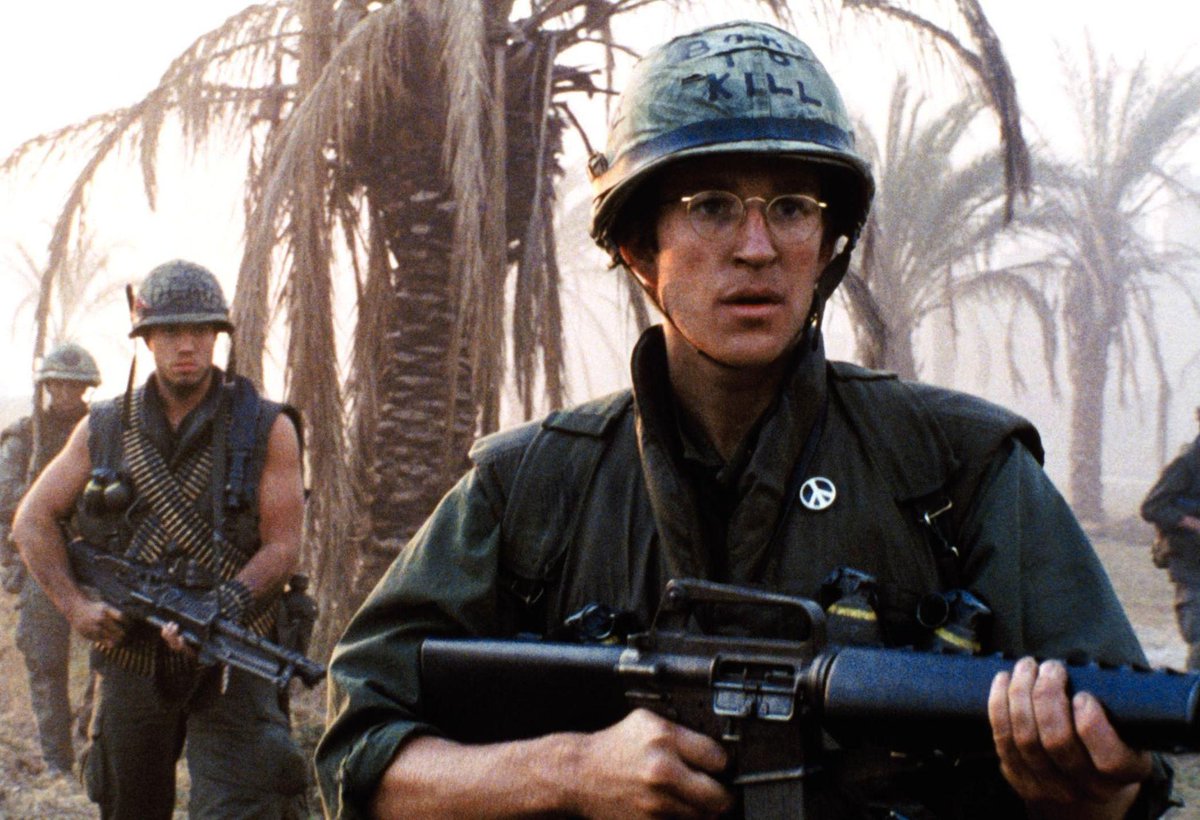THE HATEFUL EIGHT was released 8 years ago this week. Quentin Tarantino’s second western in succession, the making of story is full of leaks, letdowns and some classic QT behaviour…
1/34




1/34

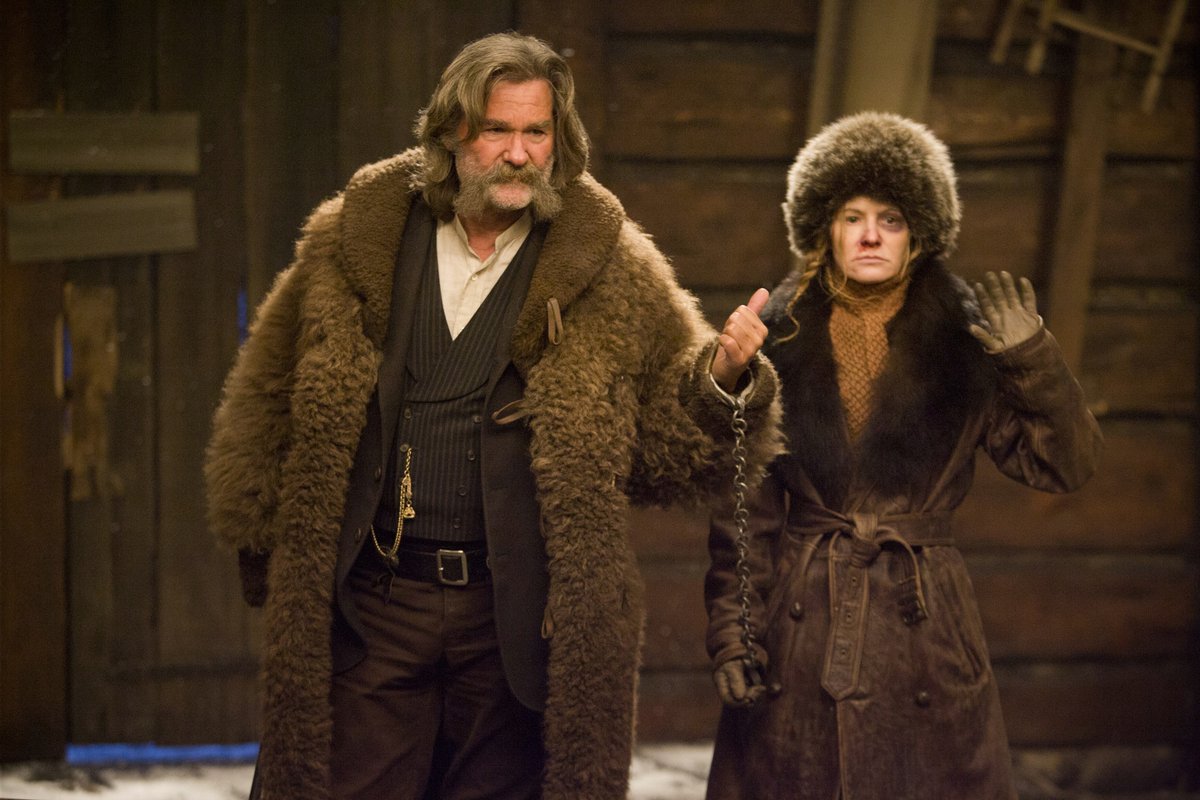
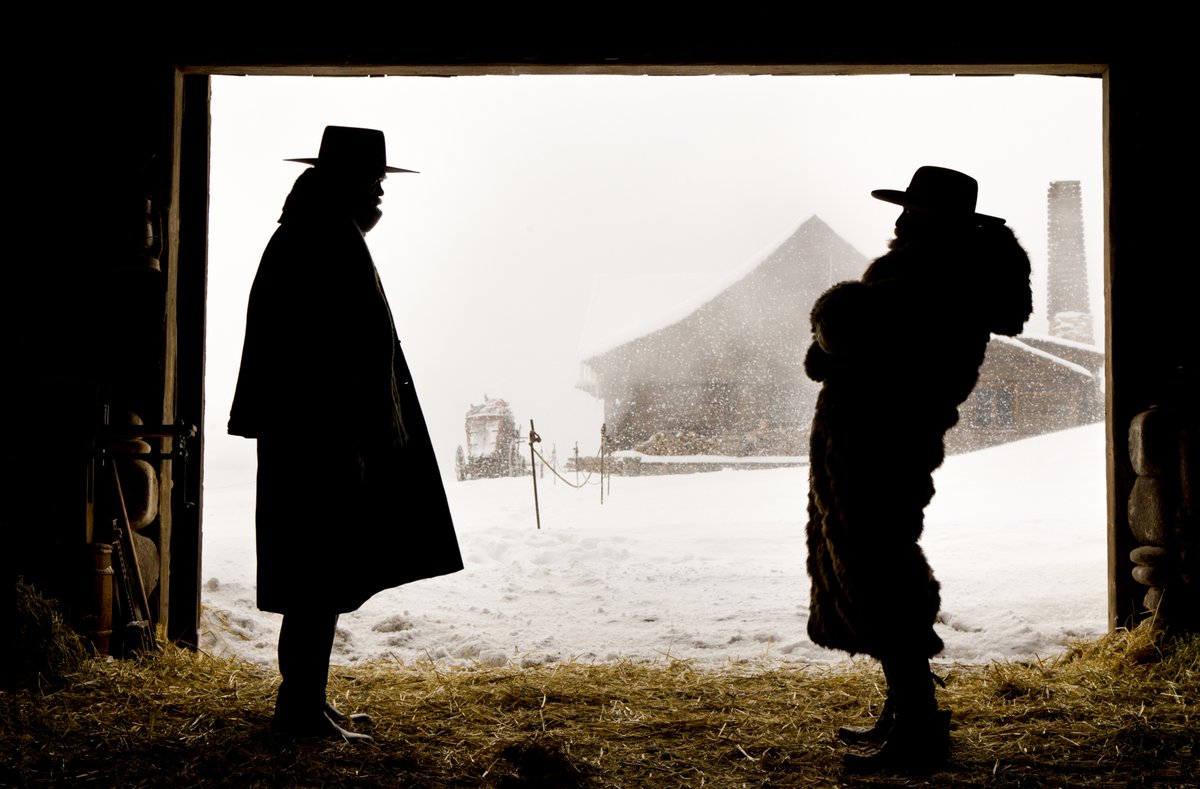
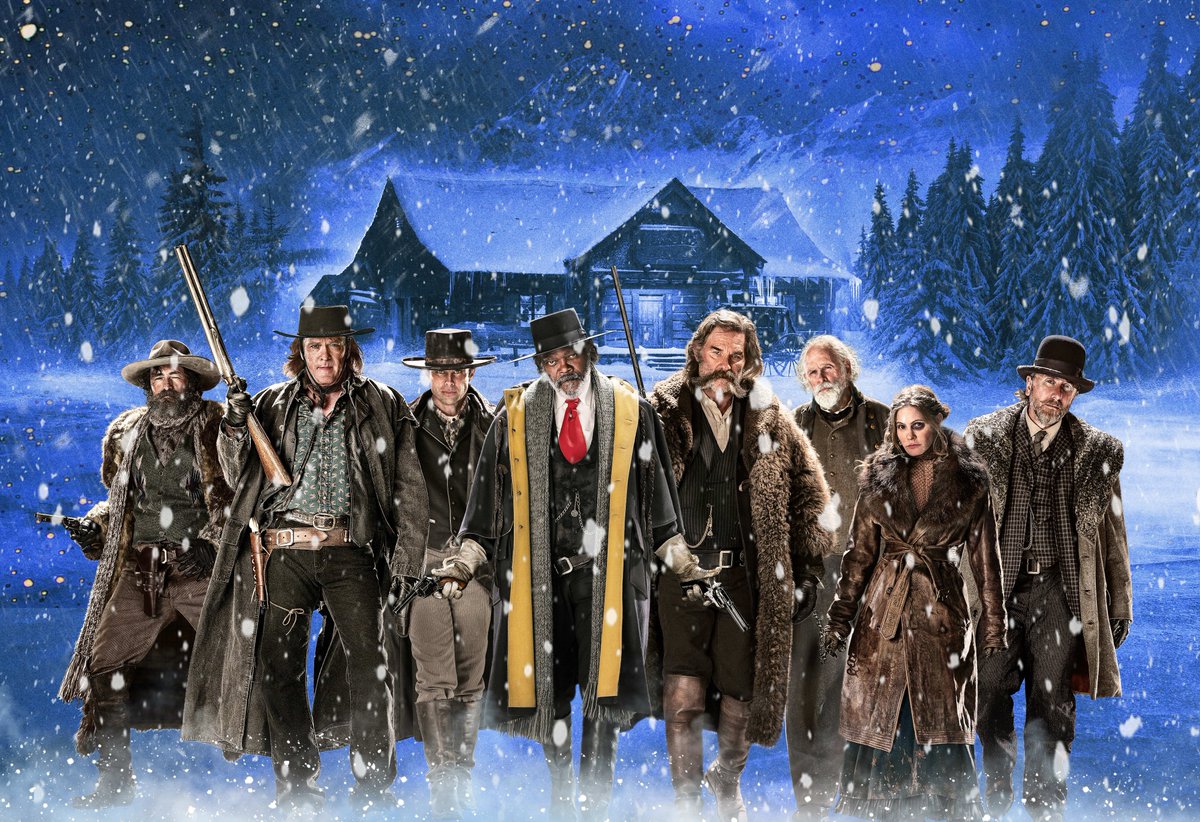
After Django Unchained had been Quentin Tarantino’s most successful film at the box office in 2012, he decided Django’s story wasn’t done. QT began crafting a new tale – Django In White Hell – thinking it could work as either a novel or a feature film.
2/34


2/34


Taking inspiration from John Carpenter’s The Thing, Tarantino’s new story would be set in a remote, snowbound cabin and revolve around a bunch of strangers who don’t trust each other. Realising this wouldn’t work with a character audiences knew, QT replaced Django.
3/34


3/34


On finishing the script – called The Hateful Eight- Tarantino gave it to some trusted friends and actors for feedback. Whether it was one of these people, or possibly an agent, is unknown but the script ended up leaked and uploaded in full to celebrity gossip site Gawker.
4/34


4/34


Tarantino took legal action against Gawker and, feeling upset and betrayed, decided to shelve The Hateful Eight as a project. He said at the time “It’s one idea of ten I’ve been working on.”
5/34


5/34


Then, in 2014, a staged reading of QT’s script was set up at LA’s Ace Theatre for charity. Tarantino regulars like Sam Jackson, Tim Roth and Zoe Bell took part. It went down so well with the 1600-strong audience that Tarantino decided to revive it as a film.
6/34




6/34




Much of the cast is made up of regular Tarantino collaborators. The parts of Major Warren, John “The Hangman” Ruth, Oswaldo, and Joe Gage were written with Samuel L. Jackson, Kurt Russell, Tim Roth, and Michael Madsen in mind. They were all available and cast.
7/34




7/34




Casting the main female character – Daisy Domergue – wasn’t so straightforward. Michelle Williams, Robin Wright, Hilary Swank, and Demi Moore were all reported to be considered.
8/34




8/34




Tarantino originally wanted Jennifer Lawrence to play Daisy, but she was unavailable. Katee Sackhoff was reportedly a very strong contender before Tarantino decided she was too young and cast Jennifer Jason Leigh. “I need somebody I could trust,” QT would say.
9/34



9/34



Jennifer Jason Leigh is daughter of actor/director Vic Morrow. In 1970, Morrow directed a film called A Man Called Sledge – a western that begins with a stagecoach driving through the snow-followed by a hold up.
10/34



10/34



It was reported at the time that Christoph Waltz and Viggo Mortensen were in talks for roles (rumours were that Waltz was to reprise his role of Dr King Schultz from Django Unchained, with Mortensen as Jody Domergue) Due to scheduling conflicts, neither ended up in the film.
11/34

11/34


Ruth and Daisy are heading for the town of Red Rock. It is a fictional town made up by Quentin Tarantino. However, there is a Red Rocks in Colorado, where the film was shot.
12/34


12/34


QT said he was inspired by classic western TV shows like Bonanza and The High Chaparral: “Those shows would have an episode where outlaws would take the lead characters hostage… and they all had a past that was revealed. That may or may not be true.”
13/34


13/34


QT said he had two main cinematic inspirations. One was The Thing, where a bunch of scientists are thrown together in a life or death situation in an Antarctic outpost. The other was his own film, Reservoir Dogs. He screened both to the main cast.
14/34




14/34




There is a visual reference to The Thing too. Stagecoach driver O.B. Jackson wears a hat and glasses combo very similar to that of Kurt Russell’s R.J. MacReady in The Thing.
15/34


15/34


QT ditched the idea of a Django Unchained sequel, but there are a couple of references. When Warren is introduced, he’s sitting on three corpses and a saddle that was previously owned by Django. We also see Django’s green jacket on the floor of the Minnie's Haberdashery.
16/34


16/34


As usual in a Tarantino film, there are references to other movies. The name of the stagecoach line is Butterfield Overland Stage. This is the same name as in 3:10 to Yuma.
17/34


17/34


The name of Major Marquis Warren is a tribute to writer-director Charles Marquis Warren, a filmmaker who specialised in westerns, such as Little Big Horn and TV show Gunsmoke.
18/34




18/34




Oswaldo Mowbray is a homage to Wallace Hyberry – a character from The Chant of Jimmie Blacksmith. Both are hangmen and both speak with very polite British manners.
19/34


19/34


Jody’s (Channing Tatum) death was originally even more gruesome. In the script, after coming out of the basement, he's shot in the arm by Sheriff Mannix and in the back by Warren. He falls and is left by Warren and Mannix to be eaten to death by rats.
20/34


20/34


Western legend Ennio Morricone scored the film, the first western he had done in 40 years. Morricone had previously said he’d never work with QT again after how his music was used in Django Unchained, but changed his mind when he read the script.
21/34


21/34


Morricone said he said he considers the film to be an adventure rather than a western and scored it based on feelings the script gave him instead of classic western beats. As he only had 1 month to write, he recycled some unused pieces he’d written for The Thing.
22/34


22/34


Morricone won a long-awaited Oscar for Best Score for the film. At 87 years old, he was the oldest ever recipient of an Academy Award (beating 83 year old Charlie Chaplin) for 2 years, until 89 year old James Ivory won Best Adapted Screenplay for Call Me By Your Name.
23/34
23/34
To get QT to film there, the state of Colorado agreed to fund $5m of the production. Colorado is known for being cold but during filming there was a streak of nice weather. Snow had to be flown in specially for the shoot and the set was kept at freezing conditions.
24/34


24/34


To create the blizzard scenes, huge sunblocks, huge fans and starch were used. When a large amount of snow melted away, production was placed on hiatus. Luckily for QT, a big storm hit 2 days later, allowing them to finish the shoot.
25/34




25/34




The song sung by Daisy is an Australian folk song called Jim Jones at Botany Bay, and was performed live on the set by Jennifer Jason Leigh. They did several takes, but the one in the film is all from the same take.
26/34


26/34
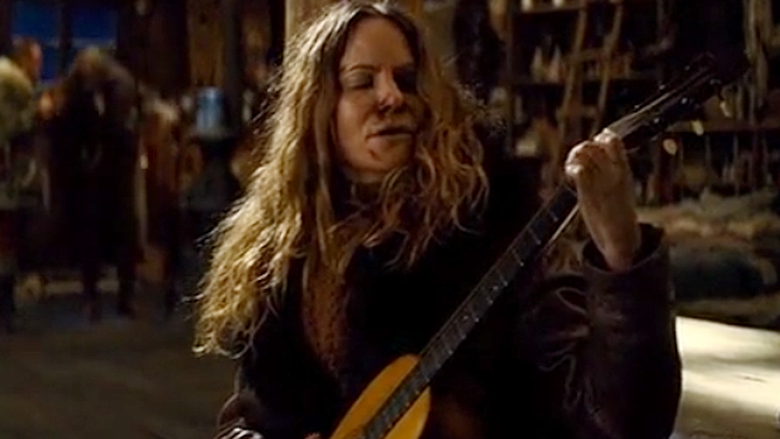

The guitar was an 1870s antique on-loan from a museum, worth about $40k. However, Kurt Russell thought it was one of the 6 replicas specially built and smashed it for real. Leigh’s reaction in the scene below is real – she looks and shouts off-screen to Tarantino.
27/34
27/34
We see the Tarantino-created cigarette brand, Red Apple (or Manzana Roja). Characters smoke the Red Apple brand of tobacco, Minnie says she uses Red Apple tobacco and, at one point, Bob offers the others a Manzana Rojo cigar.
28/34



28/34



QT is famous for being a student of the medium. As such, the film was shot on 70mm Ultra Panavision cameras like old classics such as Ben-Hur and parts of How The West Was Won. 70mm film requires special outdated equipment so caused issues when it didn’t always work.
29/34




29/34




Originally, Warren was supposed to die in the film. He would be shot over and over when Jody appears and fall to the ground. Daisy would then finish him off by shooting him 3 times between the eyes. It changes so Warren survives beyond the film.
30/34
30/34
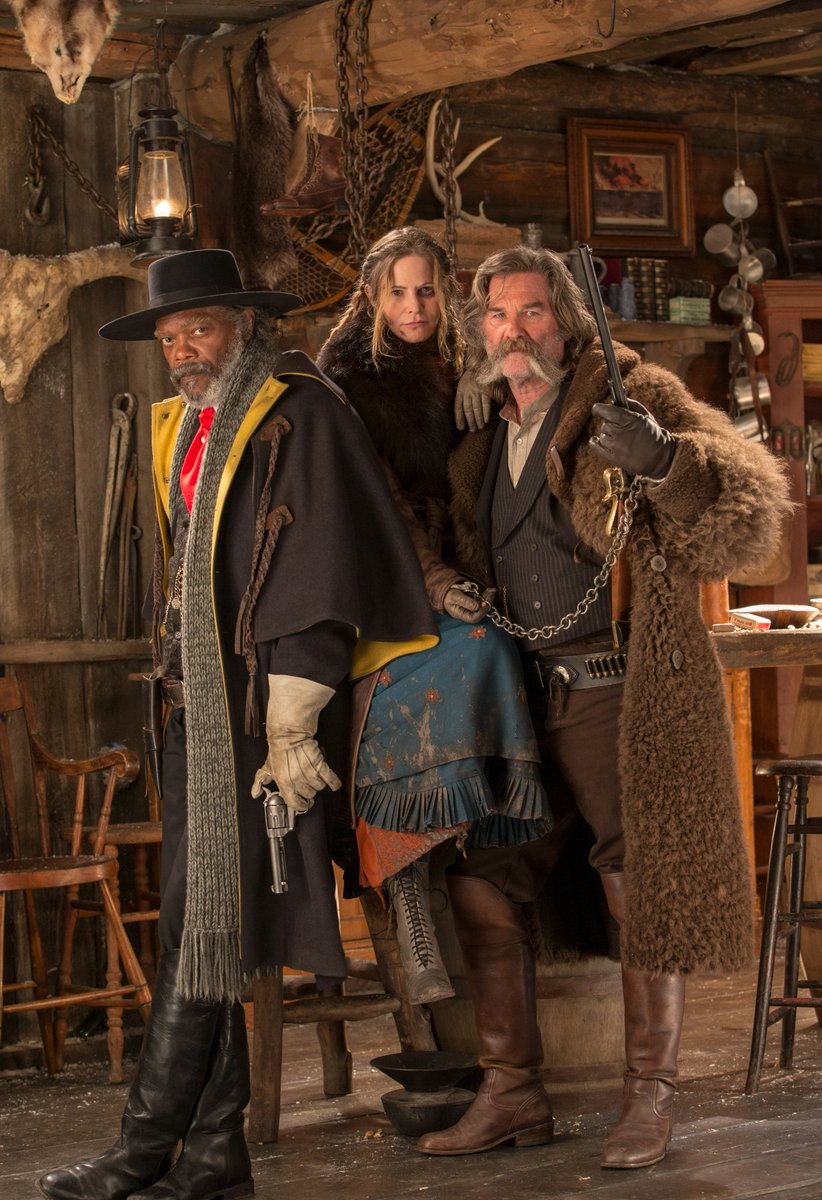
Tarantino always planned to have Daisy hanged at the end of the film, to fulfil the promise made at the start. To ensure it was the right decision, QT wrote a private version of the script in the first person from Daisy’s POV to better understand her character and story.
31/34



31/34
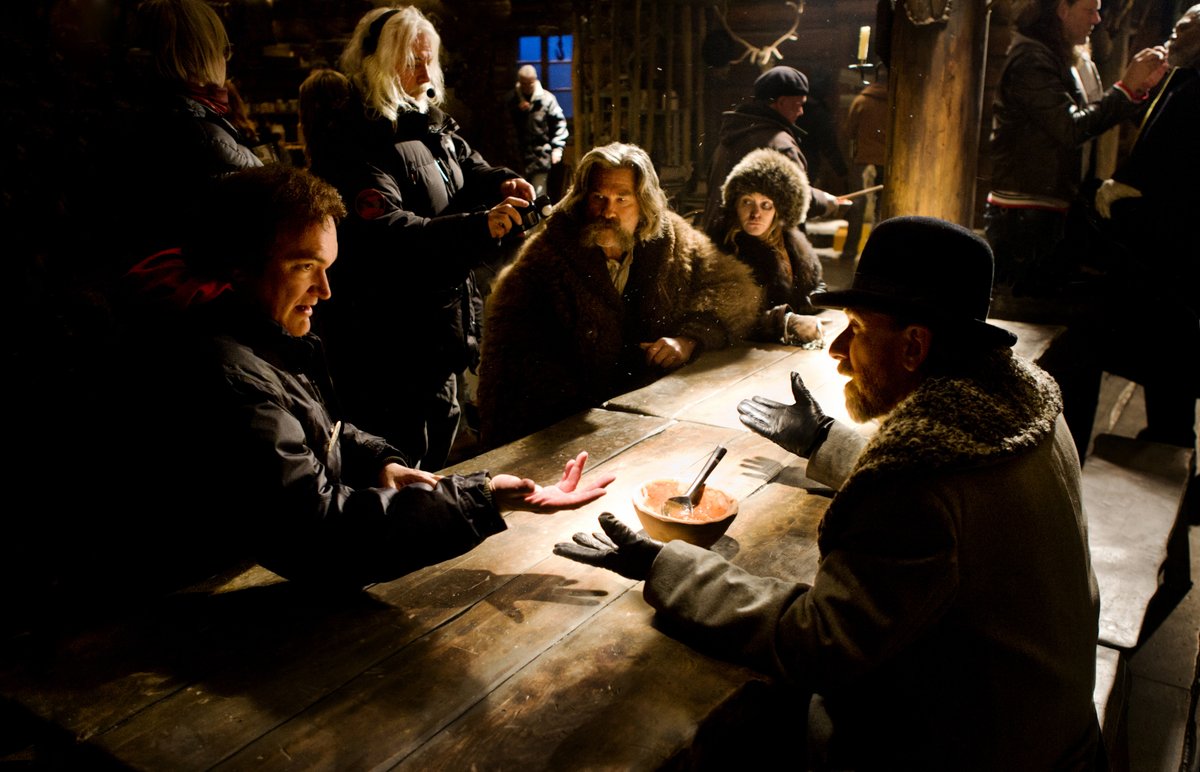


By 2015, most theaters had digital projectors, meaning the 70mm QT had filmed on wasn’t compatible. After back and forth with the distributors, it was arranged for 96 theaters to be fitted with 70mm film projectors to show the film as QT intended, at a cost of $10m.
32/34


32/34


On a budget of just $44m, The Hateful Eight grossed $156.5m at the box office. And, as well as Ennio Morricone’s win, Jennifer Jason Leigh was nominated for Best Supporting Actress, and Robert Richardson for Best Cinematography.
33/34




33/34




And did you know, The Hateful Eight is a Christmas film (of sorts)? Joe Gage mentions he’s traveling to Red Rock to see his mother for Christmas, and Mexican Bob plays Silent Night on the piano…
34/34



34/34



If you liked our making of story behind THE HATEFUL EIGHT, please share the opening post 😀
https://x.com/ATRightMovies/status/1741407156912431487?s=20
• • •
Missing some Tweet in this thread? You can try to
force a refresh
















































